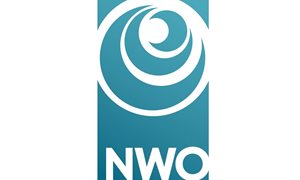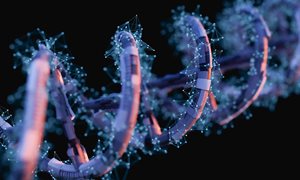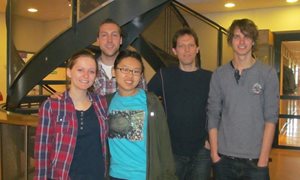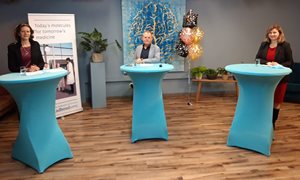 A study entitled “N-glycan mediated adhesion strengthening during pathogen-receptor binding revealed by cell-cell force spectroscopy” was recently accepted for publication in Scientific Reports. This work was done by Joost te Riet and colleagues in the group of Alessandra Cambi, theme Nanomedicine, in collaboration with Carl Figdor, theme Cancer development and immune defense.
A study entitled “N-glycan mediated adhesion strengthening during pathogen-receptor binding revealed by cell-cell force spectroscopy” was recently accepted for publication in Scientific Reports. This work was done by Joost te Riet and colleagues in the group of Alessandra Cambi, theme Nanomedicine, in collaboration with Carl Figdor, theme Cancer development and immune defense.
Although the primary players in these interactions are receptors on the immune cells that bind to specific molecules on the Candida cell wall, the glycocalyx of the immune cells now appears responsible for strengthening these interactions by increasing cell stiffening at the contact site with the pathogen.
These findings demonstrate for the first time the direct involvement of this cell sugar layer in strengthening cell-pathogen interactions and put forward a possible role for the glycocalyx as extracellular ”skeleton”. This exo-skeleton could possibly synergize with the intracellular actin cytoskeleton to reinforce cell-pathogen interactions, eventually facilitating pathogen uptake by the immune cell.
Unraveling the repertoire of molecular mechanisms involved in host-pathogen interactions will not only increase our understanding of these processes but will also on a long run provide novel leads for treatments of infectious diseases. Moreover, glycocalyx defects are associated with various pathologies, such as cancer, diabetes and congenital disorders of glycosylation and are known to affect the immune system, thus making these initial results relevant to a broad scientific community.
Link to the publication on PubMed you can find here.
Related news items

Rubicon grants awarded to three RIMLS researchers
19 April 2022Three researchers have received Rubicon funding from NWO/ZonMw. This will enable Elke Muntjewerff, Laura de Vries and Laurens van de Wiel to do research at a foreign research institute for the next two years.
go to page
ERC Proof of Concept Grant for Martijn Verdoes
8 March 2022 Martijn Verdoes, group leader Chemical Immunology at the department of Tumor Immunology, has been awarded an ERC Proof of Concept (PoC) Grant. The ERC PoC Grants are designed to support ERC grantees with the commercial or societal application of the results of their funded research. go to page
New genetic defect links cell biology and protein glycosylation
10 November 2021 Peter Linders, Dirk Lefeber and Geert van den Bogaart together with international colleagues have recently reported on novel cell biological insights, by identifying a genetic disorder in syntaxin-5 which allowed to unravel a new mechanism regulating intracellular transportation. go to page
RIMLS awards call for nominations
19 October 2021 RIMLS awards several prizes to stimulate and honor our (young) researchers. Upcoming awards are Supervisor of the Year, Best Master Thesis, Best Publication, Best Image and more. Send your nominations now before 24 November 2021. go to page
Miniaturized microfluidic platform for automated epigenetic profiling
6 May 2021 Together with Fluidigm, a US-based company focusing on microfluidics, the team of Hendrik Marks publishes in Genome Research the development of a powerful plug and play ChIP-seq platform for minute amount of cells, such as embryonic specimens or small biopsies. go to page
RIMLS online award ceremony proudly presenting the winners
13 January 2021In this special webinar of the RIMLS New Year Celebration, scientific director René Bindels reviewed 2020 and looked forward to 2021. But more importantly a number of researchers received prizes in the traditional RIMLS awards ceremony.
go to page